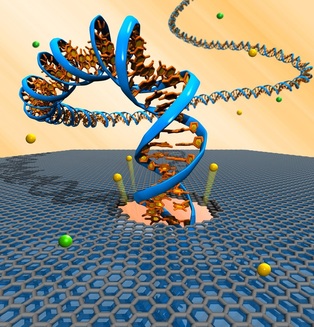 *Image from clinical-bioinformatics.com
*Image from clinical-bioinformatics.com Next Generation Sequencing (NGS) technologies to the rescue!
It wasn’t long ago when sequencing genomes were a very expensive and tiresome procedure. Nowadays, with the emergence of Next Generation Sequencing (NGS) technologies (for more information regarding these technologies, visit the following link), we are able to test many biological problems that were nearly impossible to work with in past years.
These technologies had also contributed in the development of new areas of research that followed, in close range, the omics movement. Genomics and more recently metagenomics fields emerge from the application of these technologies. Since these new approaches became readily available, scientists all over the world took advantage of these NGS technologies and began doing novel research in different areas of biology that resulted in surprising discoveries. One of these scientists was Dr. J. Craig Venter, a famous North American biologist and entrepreneur. In addition to his outstanding contributions in the determination of all the sequences in the human genome (see human genome project), he pioneered in using NGS technologies as a mean for cataloguing the metagenomes of millions of microbial species in different marine environments (see video below). As a result, he was able to determine the tremendous microbial diversity that dominated such marine environments, and he could also identify a vast collection of microbial genes with possible roles in metabolic pathways and with importance to the ecosystem (for more information see Venter, et al. 2004).
As NGS technologies continues to grow, new approaches for studying microorganisms will become available. To me, it would not be surprising if in the near future we encounter that our microscopic friends happened to be involved in important processes in the development and evolution of organisms. These new discoveries could have a huge impact in our understanding of biological processes that could change our perception in how we study human diseases, such as cancer, inflammable bowel diseases, asthma, diabetes, etc. This is the reason of why we can not overlook the presence of microbes in any biological study.
*References:
(1) Venter, J.C., et al. (2004) Environmental genome shotgun sequencing of the Sargasso Sea. Science 304(5667): 66–74.
It wasn’t long ago when sequencing genomes were a very expensive and tiresome procedure. Nowadays, with the emergence of Next Generation Sequencing (NGS) technologies (for more information regarding these technologies, visit the following link), we are able to test many biological problems that were nearly impossible to work with in past years.
These technologies had also contributed in the development of new areas of research that followed, in close range, the omics movement. Genomics and more recently metagenomics fields emerge from the application of these technologies. Since these new approaches became readily available, scientists all over the world took advantage of these NGS technologies and began doing novel research in different areas of biology that resulted in surprising discoveries. One of these scientists was Dr. J. Craig Venter, a famous North American biologist and entrepreneur. In addition to his outstanding contributions in the determination of all the sequences in the human genome (see human genome project), he pioneered in using NGS technologies as a mean for cataloguing the metagenomes of millions of microbial species in different marine environments (see video below). As a result, he was able to determine the tremendous microbial diversity that dominated such marine environments, and he could also identify a vast collection of microbial genes with possible roles in metabolic pathways and with importance to the ecosystem (for more information see Venter, et al. 2004).
As NGS technologies continues to grow, new approaches for studying microorganisms will become available. To me, it would not be surprising if in the near future we encounter that our microscopic friends happened to be involved in important processes in the development and evolution of organisms. These new discoveries could have a huge impact in our understanding of biological processes that could change our perception in how we study human diseases, such as cancer, inflammable bowel diseases, asthma, diabetes, etc. This is the reason of why we can not overlook the presence of microbes in any biological study.
*References:
(1) Venter, J.C., et al. (2004) Environmental genome shotgun sequencing of the Sargasso Sea. Science 304(5667): 66–74.
 RSS Feed
RSS Feed